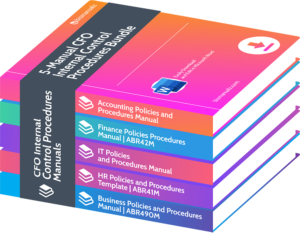What Should a CFO Know About Financial Software Solutions?

Are you a CFO looking to stay ahead in today’s rapidly evolving financial landscape? With the rise of technology, it is crucial for CFOs to have a deep understanding of financial software solutions. In this article, we will explore the importance of financial software for CFOs and how it can help address their concerns and challenges. Stay ahead of the game and discover what you need to know about financial software solutions. What should a CFO know about financial software solutions?
What Is a CFO?
A CFO, or Chief Financial Officer, is a high-ranking executive responsible for overseeing a company’s financial operations. They are in charge of financial planning, budgeting, forecasting, and reporting, ensuring compliance with regulations and driving financial strategy.
A CFO is a crucial decision-maker, providing valuable insights and analysis to guide the company’s financial direction. They work closely with other departments to optimize financial performance and minimize risks. In essence, a CFO is the financial leader of an organization, guiding its financial health and growth.
True story: I once had the opportunity to work with a CFO who revolutionized the financial landscape of our company. With their expertise, they implemented a new financial software solution that streamlined processes and increased efficiency. This enabled us to generate real-time financial reports and make data-driven decisions.
The strategic use of the software by the CFO significantly improved our financial performance, leading to greater profitability and stability. Their extensive knowledge of financial software solutions played a crucial role in driving our company’s success.
What Are the Roles and Responsibilities of a CFO?
A CFO, or Chief Financial Officer, plays a vital role in managing a company’s finances. Their duties involve creating financial plans, developing budgets, making forecasts, and analyzing financial data.
They are also responsible for overseeing financial reporting, managing risks, and ensuring compliance. Additionally, CFOs offer strategic guidance and aid in decision-making processes. They work closely with other departments to maintain financial stability and drive business growth.
To excel in their position, CFOs must possess strong leadership abilities, financial expertise, and a thorough understanding of the company’s operations. They must also stay updated on industry trends and regulations. Suggestions for those aspiring to become CFOs include:
- Pursuing advanced education
- Gaining diverse experience
- Honing analytical and communication skills
Why Is Financial Software Important for a CFO?
Having a reliable financial software is crucial for a CFO due to its significance in streamlining financial processes, providing accurate and timely financial information, and aiding in decision-making. Financial software allows CFOs to efficiently manage budgets, track expenses, and forecast financial outcomes. It also enables them to monitor key performance indicators, analyze financial data, and generate reports for stakeholders.
Additionally, financial software helps CFOs comply with regulatory requirements and ensures data security. With the ever-increasing complexity of financial operations, having a robust financial software solution is essential for a CFO to effectively carry out their responsibilities.
What Are the Benefits of Using Financial Software?
Using financial software offers numerous benefits for CFOs, including streamlining financial processes and improving decision-making.
- Automation: Financial software automates tasks, reducing manual errors and saving time.
- Reporting and Analytics: Customizable reporting and analytics provide real-time insights for informed decision-making.
- Integration: Integration with other systems enables seamless data flow and visibility across departments.
- Data Security: Financial software ensures data security and compliance with regulatory requirements.
By leveraging these benefits, CFOs can make better financial decisions, enhance forecasting capabilities, and effectively manage risks. To maximize these advantages, CFOs should carefully select software that aligns with their specific needs and goals, while also considering factors such as cost, data migration, and training.
What Are the Different Types of Financial Software?
There are various types of financial software that can greatly benefit a CFO. These include:
- Accounting Software: This software aids in managing financial transactions, recording expenses, and generating financial statements.
- Budgeting and Forecasting Software: CFOs can use this software to create and manage budgets, as well as forecast future financial performance.
- Financial Planning and Analysis (FP&A) Software: FP&A software helps CFOs analyze financial data, identify trends, and make well-informed decisions.
- Treasury Management Software: This software assists with managing cash flow, liquidity, and financial risk.
- Financial Reporting Software: This type of software automates the process of generating financial reports, ensuring accuracy and compliance.
By considering the specific needs of their organization, CFOs can select the appropriate combination of financial software to streamline their operations and enhance their decision-making processes.
What Features Should a CFO Look for in Financial Software?
As a CFO, choosing the right financial software is crucial for the success and efficiency of your company’s financial processes. In this section, we will discuss the key features that you should look for when selecting a financial software solution.
From automation of financial processes to data security and compliance, each feature plays a vital role in streamlining your financial operations. Let’s dive into the specifics of what to consider when evaluating potential financial software options.
1. Automation of Financial Processes
The automation of financial processes can greatly benefit CFOs by streamlining operations, reducing errors, and improving efficiency. To effectively implement automation, CFOs should:
- Evaluate current processes and identify areas that can be automated
- Research and select a suitable financial software solution
- Ensure compatibility with existing systems
- Customize the software to align with specific business needs
- Train employees on how to use the software
- Monitor and analyze the impact of automation on financial processes
History shows that automation has played a significant role in transforming finance functions. In the 1980s, the introduction of spreadsheet software revolutionized financial modeling and analysis, enabling CFOs to make more informed decisions.
2. Customizable Reporting and Analytics
Customizable reporting and analytics are crucial features that a CFO should prioritize when selecting financial software. Here are steps to follow when utilizing these features:
- Identify key performance indicators (KPIs) and metrics that are relevant to your organization’s financial goals.
- Customize dashboards and reports to display these KPIs, making it easy to track and analyze them.
- Create personalized views and filters to focus on specific subsets of data, such as departments or projects.
- Utilize drill-down capabilities to investigate underlying data and identify any trends or anomalies.
- Implement automated alerts or notifications to stay informed about critical financial insights.
- Leverage data visualization tools to present financial information in a visually appealing and actionable manner.
- Regularly review and refine reporting and analytics to align with evolving business needs and objectives.
3. Integration with Other Systems
Integration with other systems is a crucial feature to consider when evaluating financial software for CFOs. Here are some steps to take into account when assessing integration capabilities:
- Identify the current systems in your organization that require integration with the financial software.
- Assess the compatibility of the financial software with your existing systems, such as ERP, CRM, or HR systems.
- Evaluate the level of technical support and the ease of integration provided by the software vendor.
- Consider the flexibility of the integration options, including APIs, connectors, or pre-built integrations.
Pro-tip: When searching for financial software, prioritize options that offer seamless integration with your current systems to streamline data flow and improve efficiency in financial processes.
4. Data Security and Compliance
When choosing financial software, a CFO must carefully consider data security and compliance. Strong security measures, including encryption and user authentication, are essential for maintaining the confidentiality and integrity of financial data.
Compliance features, such as automated regulatory reporting, are also important for meeting legal requirements. Additionally, a CFO should evaluate the software’s ability to adapt to changing regulations and industry standards.
For instance, a global manufacturing company successfully implemented financial software with robust data security and compliance measures, enabling them to streamline financial operations and safeguard sensitive financial information. This ultimately contributed to their overall success and growth.
How Can Financial Software Help a CFO Make Better Financial Decisions?
As a CFO, staying on top of your company’s financial health is crucial. With the ever-changing financial landscape, it can be challenging to make informed decisions quickly. However, with the advancements in financial software solutions, CFOs now have powerful tools at their disposal.
In this section, we will discuss how financial software can help CFOs make better financial decisions by providing real-time data and insights, forecasting and budgeting capabilities, and risk management and compliance features.
1. Real-time Data and Insights
Real-time data and insights are essential for CFOs to make informed financial decisions. To take advantage of this capability, CFOs should follow a series of steps:
- Implement a robust financial software solution that provides updates on real-time data.
- Ensure proper integration with other systems to gather data from various sources.
- Customize reporting and analytics to focus on key financial metrics and trends.
- Regularly monitor and analyze real-time data to identify opportunities and risks.
In the past, the lack of real-time data could result in delayed decision-making and missed opportunities. However, with advancements in technology, CFOs now have access to real-time insights, allowing them to quickly respond to market changes and optimize financial performance.
2. Forecasting and Budgeting Capabilities
Forecasting and budgeting capabilities are essential features for financial software used by Chief Financial Officers (CFOs). These capabilities are crucial in developing accurate financial forecasts, creating budgets, and tracking financial performance against targets.
By utilizing these capabilities, CFOs can analyze historical data, identify trends, and make well-informed decisions, aiding in strategic planning, resource allocation, and risk management.
Financial software provides real-time insights to CFOs, allowing them to adjust budgets and forecasts as needed. As per a study by Deloitte, organizations that utilize advanced forecasting and budgeting tools achieve 50% higher revenue growth and 30% greater profitability compared to their peers.
3. Risk Management and Compliance
To effectively manage risk and ensure compliance, CFOs should follow these steps:
- Evaluate Existing Processes: Assess current risk management and compliance protocols to identify gaps or areas for improvement.
- Establish Risk Framework: Develop a comprehensive risk management framework that outlines the organization’s risk appetite, mitigation strategies, and procedures.
- Implement Internal Controls: Put in place internal controls to monitor and mitigate risks, ensuring compliance with regulations and policies.
- Regular Audits: Conduct regular audits to evaluate the effectiveness of risk management and compliance efforts.
- Training and Education: Provide ongoing training and education to finance teams and other stakeholders to promote awareness and understanding of risk management and compliance requirements.
- Stay Updated: Stay informed about changes in regulations, industry standards, and emerging risks to adapt risk management and compliance strategies accordingly.
By following these steps, CFOs can effectively manage risk, ensure compliance, and protect their organization’s financial well-being.
What Are the Challenges of Implementing Financial Software?
Implementing financial software can bring numerous benefits to a company, such as increased efficiency and better decision making. However, it is not without its challenges. In this section, we will discuss the key challenges that CFOs should be aware of when implementing financial software solutions.
From considering the cost and return on investment, to navigating data migration and integration, and ensuring proper training and adoption, there are important factors to consider for a successful implementation.
1. Cost and Return on Investment
When considering financial software solutions, CFOs should thoroughly evaluate the costs and potential return on investment. Here are some steps to consider:
- Identify the initial and ongoing costs associated with implementing the software, including licensing fees, maintenance, and training expenses.
- Calculate the potential return on investment by assessing the expected benefits, such as increased efficiency, improved accuracy, and time savings.
- Consider the long-term value of the software in terms of scalability, flexibility, and its ability to support future growth initiatives.
- Evaluate the software’s ability to integrate with existing systems and processes, minimizing the need for additional investments or modifications.
- Assess the software’s potential to streamline financial processes, automate routine tasks, and reduce manual errors, resulting in cost savings.
- Consider the impact of the software on risk management and compliance, reducing the likelihood of financial errors, fraud, and penalties for non-compliance.
- Weigh the cost of implementing the software against the potential benefits, ensuring a positive return on investment within a reasonable timeframe.
2. Data Migration and Integration
To successfully implement financial software, CFOs should follow a systematic approach to data migration and integration. Consider the following steps:
- Assess Current Systems: Evaluate existing software and data sources to understand the scope of data migration and integration.
- Define Data Requirements: Determine the specific data fields and formats required for the new software.
- Data Mapping: Map the data from the old systems to the corresponding fields in the new software.
- Data Cleansing: Cleanse and validate the data to ensure accuracy and consistency.
- Data Extraction: Extract the relevant data from the old systems and prepare it for migration.
- Data Migration: Migrate the data to the new software, ensuring a smooth and error-free transfer.
- Data Integration: Integrate the new software with other systems, such as ERP or CRM, to enable seamless data flow.
- Testing and Validation: Test the migrated and integrated data to verify its accuracy and functionality.
- Training and Support: Provide comprehensive training to users and offer ongoing support during the transition.
3. Training and Adoption
Implementing financial software requires careful planning and consideration to ensure successful training and adoption.
- Define goals and objectives: Clearly outline the purpose and expected outcomes of implementing the software.
- Involve key stakeholders: Engage key team members from different departments to gather input and ensure buy-in.
- Plan for data migration and integration: Develop a comprehensive plan to smoothly transfer data from existing systems to the new software.
- Provide adequate training and support: Offer thorough training sessions and ongoing support to help employees adapt to the new software.
Pro-tip: Assign “super users” within each department to serve as internal champions and provide additional support to their colleagues during the transition period.
What Are the Best Practices for CFOs When Implementing Financial Software?
As a CFO, implementing financial software can be a daunting task. However, with the right approach and best practices in place, it can also be a highly successful and valuable endeavor. In this section, we will discuss the key best practices that every CFO should consider when implementing financial software.
By following these guidelines, you can ensure a smooth and efficient implementation process that aligns with your goals and objectives. From involving key stakeholders to planning for data migration and providing adequate training, we’ll cover all the essential steps for a successful software implementation.
1. Define Goals and Objectives
When implementing financial software, it is crucial for CFOs to establish clear goals and objectives to ensure a successful implementation and maximize the software’s value.
- Assess Current State: Evaluate the current financial processes and systems to identify pain points and areas for improvement.
- Identify Goals: Define specific goals and objectives that the financial software should help achieve, such as improving efficiency, accuracy, or decision-making.
- Align with Business Strategy: Ensure that the goals and objectives align with the overall business strategy to drive growth and support long-term success.
- Establish Key Performance Indicators (KPIs): Determine the KPIs that will measure the success of the financial software implementation and track progress towards achieving the defined goals.
- Create an Implementation Plan: Develop a comprehensive plan that outlines the steps, timeline, and resources required for the successful implementation of the financial software.
In a similar situation, a CFO defined goals and objectives before implementing financial software. By streamlining processes and improving data accuracy, they were able to reduce the monthly closing time by 50% and provide real-time financial insights to support strategic decision-making.
2. Involve Key Stakeholders
Involving key stakeholders is crucial for the successful implementation of financial software solutions. To ensure their engagement and support, CFOs should follow these steps:
- Identify relevant stakeholders: Determine the individuals or departments who will be impacted by the software implementation.
- Communicate the benefits: Clearly explain how the software will involve key stakeholders, improve processes, increase efficiency, and support organizational goals.
- Address concerns: Listen to any concerns or objections raised by stakeholders and provide appropriate solutions or reassurances.
- Get feedback: Involve stakeholders in the decision-making process by seeking their input and considering their perspectives.
- Provide training: Offer comprehensive training and support to stakeholders, ensuring they are equipped to effectively use the software.
- Establish accountability: Define roles and responsibilities for each stakeholder, ensuring they understand their involvement in the implementation process.
- Maintain communication: Keep stakeholders informed about updates, progress, and any changes throughout the implementation process.
3. Plan for Data Migration and Integration
When implementing financial software, CFOs should plan for data migration and integration to ensure a smooth transition and maximize the benefits of the software. Here are some steps to consider:
- Assess current data: Evaluate the existing data structure and identify any issues or areas for improvement.
- Define data requirements: Determine what data needs to be migrated and integrated into the new software.
- Cleanse and organize data: Cleanse and standardize data to ensure accuracy and consistency.
- Map data fields: Map the fields in the existing data to the corresponding fields in the new software.
- Test data migration: Perform test migrations to identify and resolve any issues before the actual migration process.
- Establish integration protocols: Set up protocols for integrating the financial software with other systems, such as ERP or CRM systems.
- Ensure data security: Implement measures to protect sensitive data during migration and integration.
- Train and educate staff: Provide training and support to employees involved in the data migration and integration processes.
4. Provide Adequate Training and Support
To successfully implement financial software, CFOs should prioritize providing adequate training and support to their teams. Here are some steps to follow:
- Identify training needs: Assess the skill level of employees and determine the areas where training is required, including providing adequate training and support.
- Select the right training method: Choose the most effective training methods, such as workshops, online courses, or one-on-one sessions, to ensure adequate training and support.
- Develop comprehensive training materials: Create user-friendly guides, videos, and manuals to facilitate understanding and adoption, ensuring adequate training and support.
- Establish a support system: Set up a dedicated support team to address any issues or questions related to the software and provide adequate training and support.
- Encourage continuous learning: Promote ongoing training opportunities to keep employees up-to-date with new features and functionalities, ensuring adequate training and support.
By providing adequate training and support, CFOs can ensure a smooth transition and maximize the benefits of financial software for their organization.
Frequently Asked Questions

What should a CFO know about financial software solutions?
Financial software solutions are essential tools for any CFO to effectively manage and analyze their company’s financial data. They offer a range of features and benefits that can greatly improve financial processes and decision-making. Here are some key things that a CFO should know about financial software solutions:
What are financial software solutions?
Financial software solutions are computer programs designed specifically for managing and analyzing financial data. They can include functions such as accounting, budgeting, forecasting, and reporting. These solutions can be customized to fit the specific needs of a company and can be cloud-based or installed locally.
What are the benefits of using financial software solutions?
There are numerous benefits to using financial software solutions, including increased accuracy and efficiency, improved data security, better monitoring and analysis of financial data, and enhanced collaboration and communication among team members. These solutions can also provide real-time insights and customizable reports to help CFOs make informed and strategic decisions.
What are the different types of financial software solutions available?
There are various types of financial software solutions available, each with its own unique features and focus. Some common types include accounting software, budgeting and forecasting software, financial reporting software, and financial analysis software. It’s important for CFOs to understand their company’s specific needs and goals to determine which type of solution would be most beneficial.
What should a CFO consider when choosing a financial software solution?
When choosing a financial software solution, a CFO should consider factors such as the specific needs of their company, the features and functionality of the solution, the cost and implementation process, and the level of support and training provided by the vendor. It’s also important to research and compare different options to find the best fit for the company’s budget and goals.
How can I ensure a successful implementation of a financial software solution?
To ensure a successful implementation of a financial software solution, a CFO should involve key stakeholders and team members in the decision-making process. They should also thoroughly train employees on how to use the solution and continuously monitor and evaluate its effectiveness. Regular communication and updates with the software vendor can also help address any issues and ensure a smooth transition.
















Leave a Reply